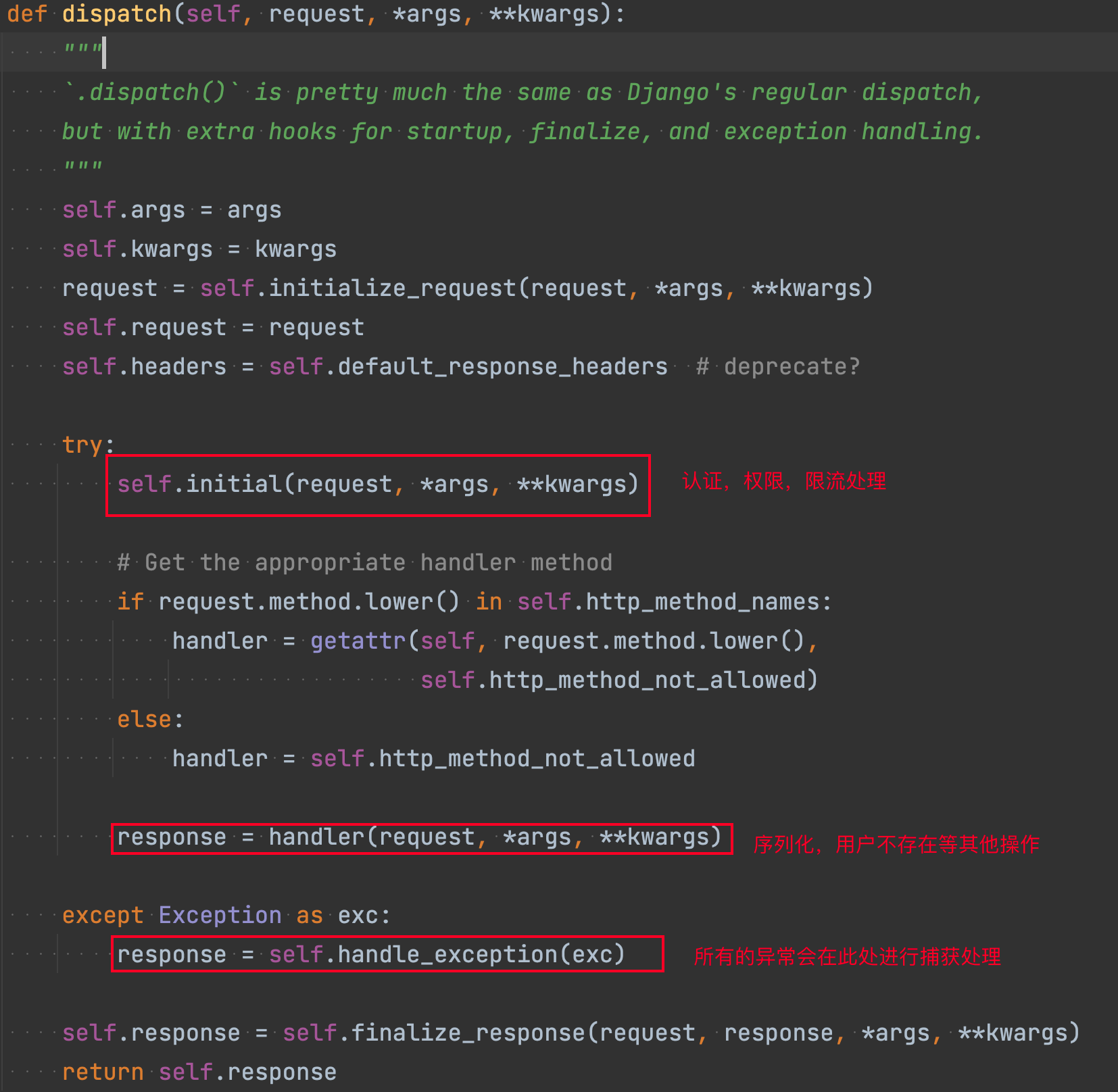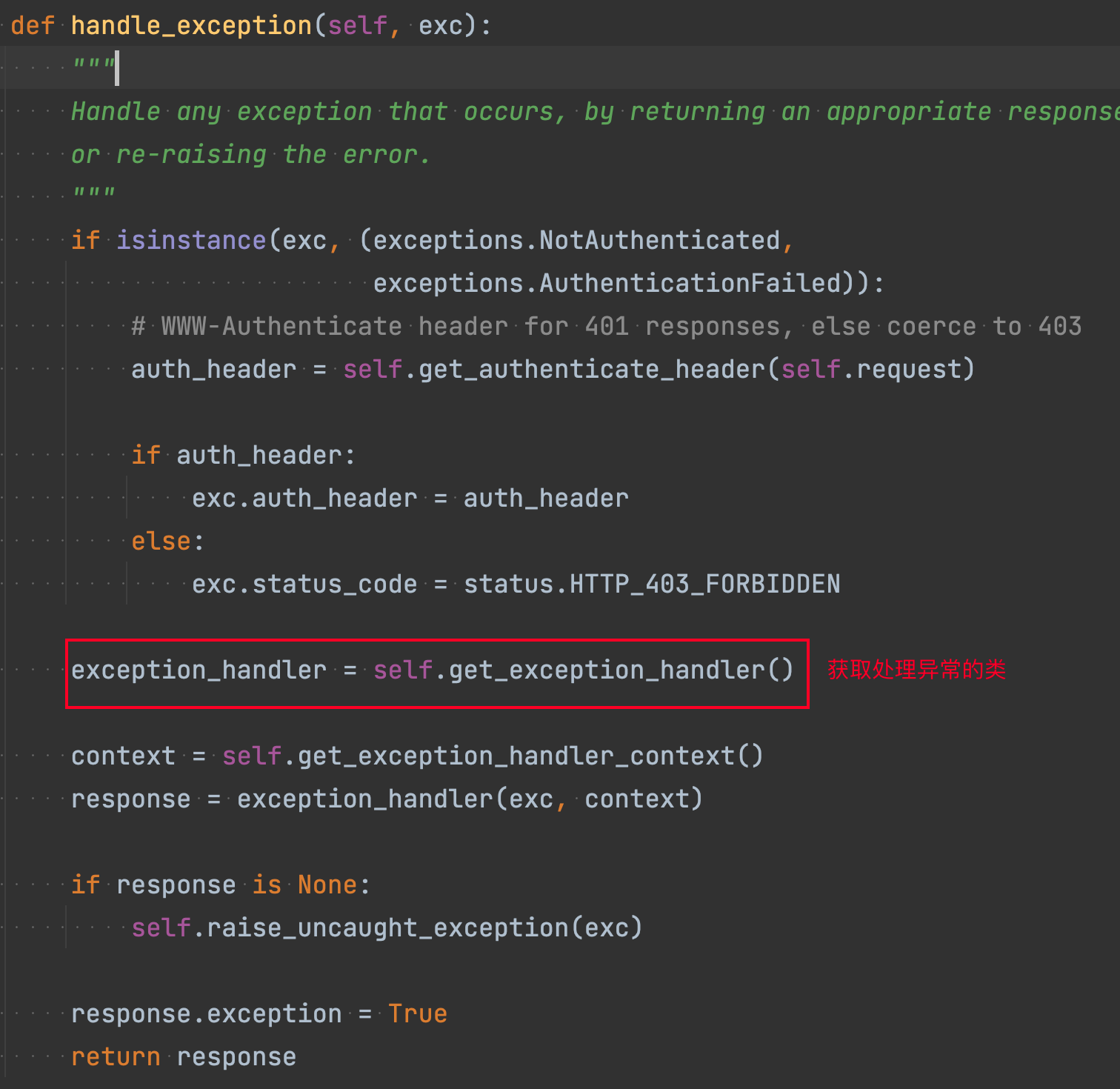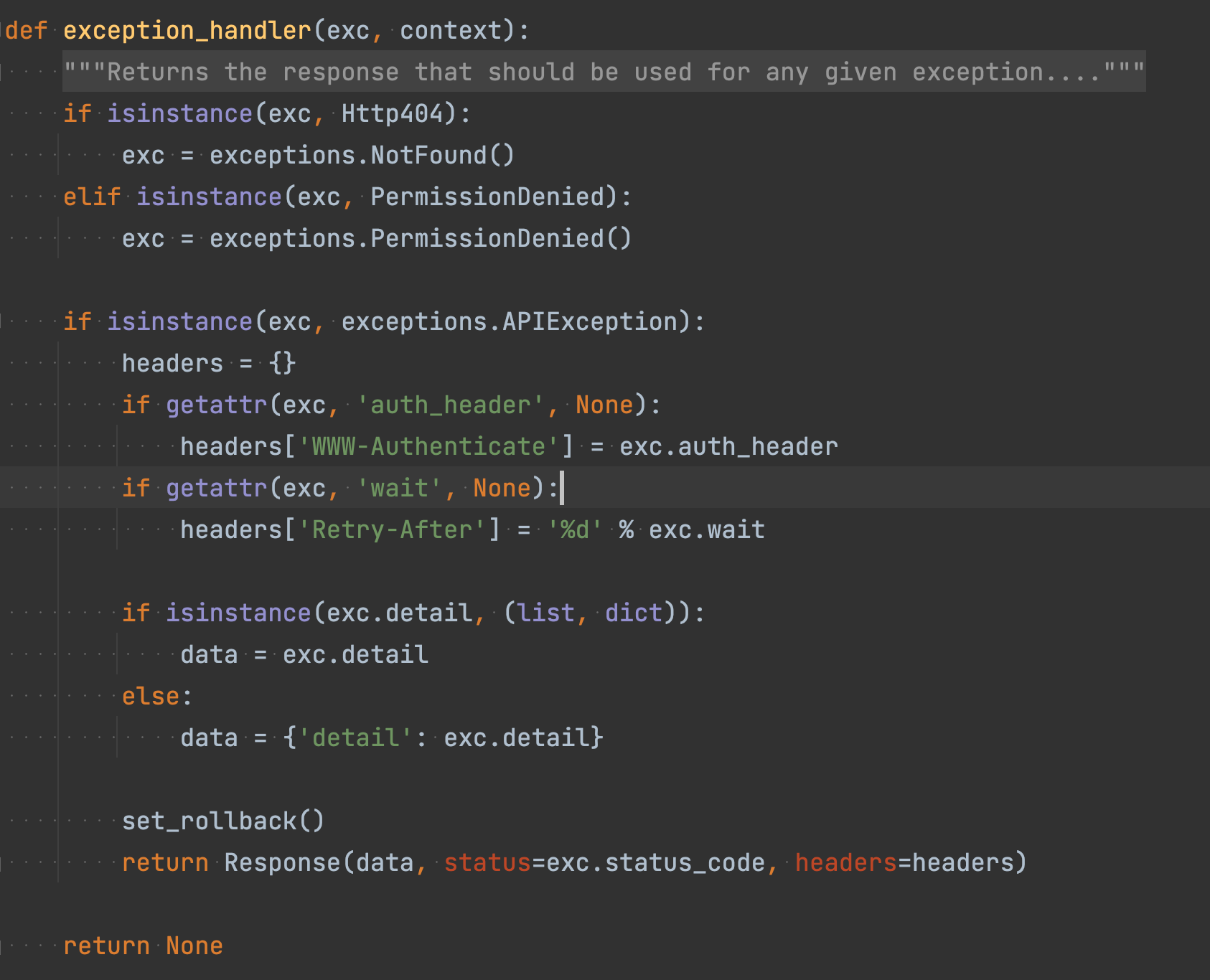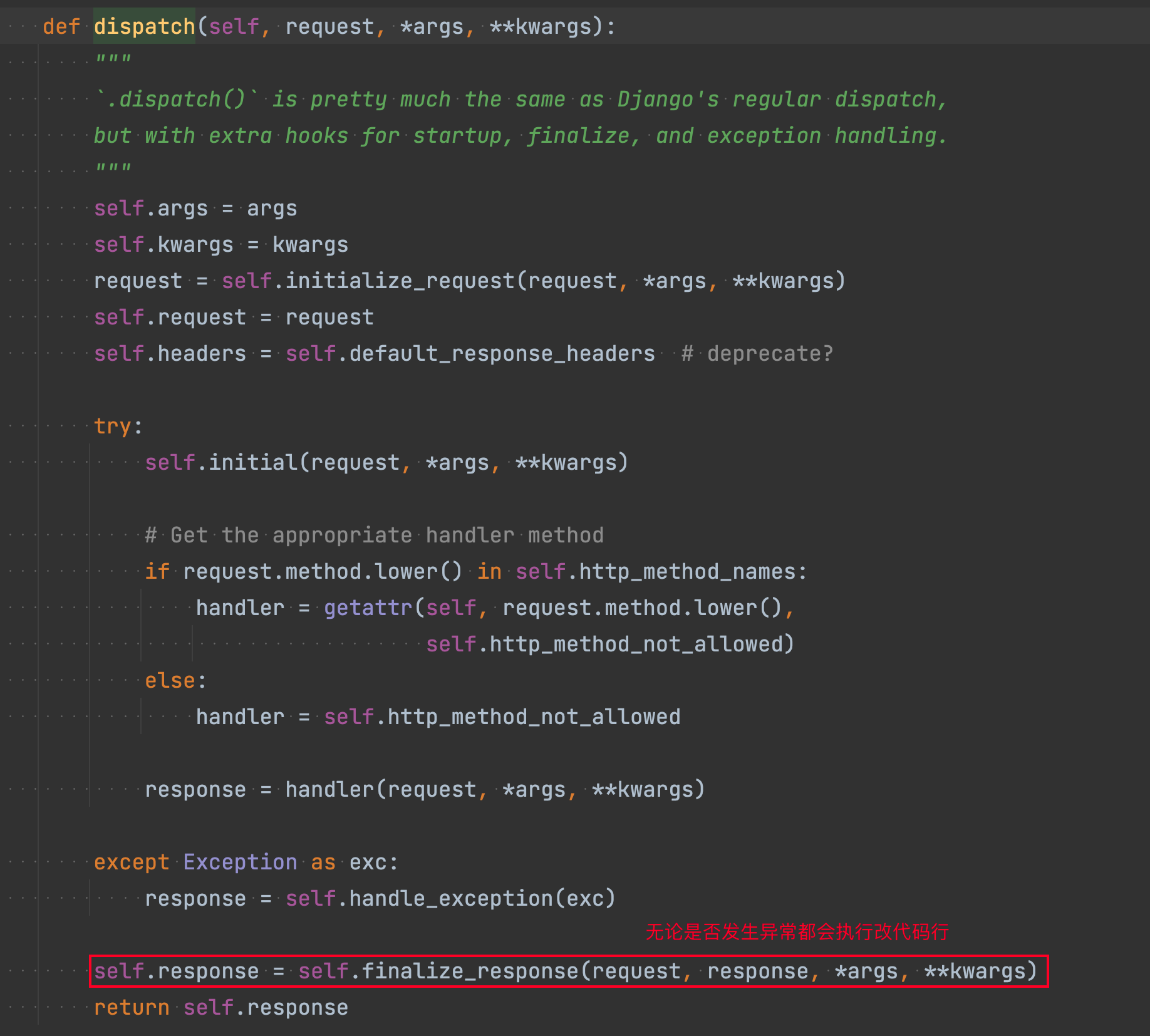django中的返回值可以分为:
- 异常返回值
- 正常返回值
1. Djanog中常见的异常返回值有如下
- 序列化校验错误
{ "age": [ "A valid integer is required." ] } - 数据不存在
http://127.0.0.1:8000/api/demon/11/
{ "detail": "Not found." } - 认证错误
{ "detail": "Incorrect authentication credentials." } - 权限错误
{ "detail": "Authentication credentials were not provided." } - 限流错误
{ "detail": "Request was throttled" } - 其他错误:python的语法错误等
2.异常处理源码分析
上面的这些错误都会在dispath函数中进行捕获和处理



最后通过配置文件可以找到处理异常的函数


这个函数就是对常见的异常进行捕获处理,并且这个函数只能处理基于APIException的类,对于python法人语法错误是无法捕获的,只能继续上报,导致程序报错
3. 自定义异常处理方法
为此我们可以自定义该类如下
# encoding:utf-8
# author:kunmzhao
# email:1102669474@qq.com
from django.core.exceptions import PermissionDenied
from django.http import Http404
from rest_framework import exceptions, status
from rest_framework.response import Response
from rest_framework.views import set_rollback
from rest_framework.exceptions import AuthenticationFailed, NotAuthenticated, Throttled, ValidationError
def exception_handler(exc, context):
"""
Returns the response that should be used for any given exception.
By default we handle the REST framework `APIException`, and also
Django's built-in `Http404` and `PermissionDenied` exceptions.
Any unhandled exceptions may return `None`, which will cause a 500 error
to be raised.
"""
if isinstance(exc, Http404):
exc = exceptions.NotFound()
exc.ret_code = 1001
elif isinstance(exc, PermissionDenied):
exc = exceptions.PermissionDenied()
exc.ret_code = 1002
elif isinstance(exc, (AuthenticationFailed, NotAuthenticated)):
exc.ret_code = 1003
elif isinstance(exc, Throttled):
exc.ret_code = 1004
elif isinstance(exc, ValidationError):
exc.ret_code = 1005
headers = {}
if getattr(exc, 'auth_header', None):
headers['WWW-Authenticate'] = exc.auth_header
if getattr(exc, 'wait', None):
headers['Retry-After'] = '%d' % exc.wait
code = getattr(exc, "ret_code", -1)
if isinstance(exc, exceptions.APIException):
detail = exc.detail
else:
detail = "请求错误"
print(detail)
if isinstance(detail, (list, dict)):
data = {"code": code, 'error': detail}
else:
data = {"code": code, 'error': detail}
set_rollback()
return Response(data, headers=headers)
配置如下
REST_FRAMEWORK = {
'EXCEPTION_HANDLER': 'utils.exception_handler',
}
以后我们也可以自定义一些异常,放入该函数中,对异常进行分类,便于前端根据异常ma进行处理
4.正常返回值源码分析

我们可以重写该方法,返回我们需要的数据格式,如下
class DemonView(ModelViewSet):
queryset = models.Student.objects.all()
serializer_class = DemonDModelSerializers
# authentication_classes = [DemonAuthentication, ]
# permission_classes = [DemonPermission, ]
# throttle_classes = [DemonThrottle, ]
def finalize_response(self, request, response, *args, **kwargs):
super().finalize_response(request, response, *args, **kwargs)
if not response.exception: // 对于异常的response不做处理
response.data = {"code": 0, "data": response.data}
return response
通过以上的方式就可以很好的自定义我们返回的数据格式了!!!

 浙公网安备 33010602011771号
浙公网安备 33010602011771号